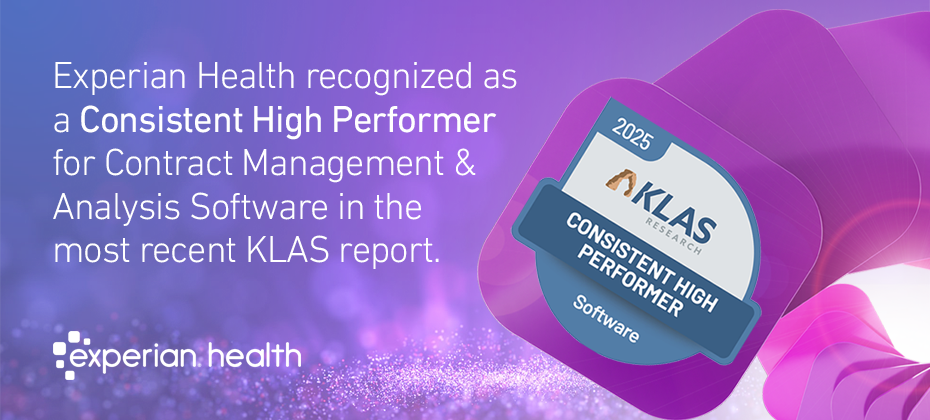
Ask any healthcare revenue cycle manager how they feel about using artificial intelligence (AI), and the response is likely to be “hopeful, but wary.” The potential is clear — fewer denials, faster reimbursements and more efficient workflows. However, with adoption slowing, it seems many have lingering concerns about implementation. According to Experian Health’s State of Claims survey, the number of providers using automation and AI in revenue cycle management has halved from 62% in 2022 to 31% in 2024.
Despite these reservations, there are bright spots. From preventing claim denials to automating patient billing, AI and automation are already helping many healthcare organizations improve operations, boost financial performance and deliver a better patient experience. This article examines what providers need to know about bringing AI technology into their revenue cycle.
Understanding the role of AI in revenue cycle management
AI regularly hits the headlines for its clinical applications, like medical imaging analysis, drug discovery and surgical robotics. But behind the scenes, it’s also quietly transforming revenue cycle management (RCM). Non-clinical processes like medical billing, claims management and patient payments are complex. Trying to manage these manually results in slow reimbursement and strained resources.
AI offers efficient solutions to reshape how providers manage these pressing issues, giving them a head start in coping with increasing costs, workforce challenges and ever-increasing volumes of data.
Benefits of AI in healthcare RCM
For most providers, AI’s main draw is its ability to deliver significant financial savings. The most recent CAQH index report suggests that switching from manual to electronic administrative transactions could save the industry at least $18 billion. That’s a compelling prospect for revenue cycle leaders looking to do more, and faster, with fewer resources.
These financial savings aren’t just the result of direct cost-cutting – they stem from the broader operational benefits AI brings to the table. These include:
- Streamlined billing processes: Automating repetitive tasks and minimizing human error reduces costly mistakes that lead to payment delays
- Fewer claim denials: Predictive analytics help staff identify claims that may be at risk of denial so that issues can be tackled upfront
- Real-time eligibility verification: AI tools can check a patient’s insurance details in an instant, to catch outdated information and prevent billing mistakes and denials
- Better data insights: AI has the power to analyze vast datasets and find patterns and bottlenecks to help teams improve decision-making
- Productivity boost: With reduced admin overhead, staff can focus on higher-priority tasks and improve overall performance, with less stress and burnout.
The benefits extend to patients, too. Behind every denied claim or billing error is a patient caught in administrative confusion. By automating processes, eliminating errors and increasing transparency, AI and automation help providers give patients financial clarity throughout their healthcare journey.
How AI is revolutionizing healthcare RCM
Here are some examples of what this looks like in practice:
Using AI to manage complex billing procedures
Medical billing errors cost healthcare organizations millions of dollars each week, and the problem is only getting worse. Experian Health’s State of Patient Access survey 2024 found that 49% of providers say patient information errors are a primary cause of claim denials, while in the State of Claims survey, 55% of providers said claim errors were increasing.
Manual processes make managing the complexity of insurance plans, billing codes and patient payments near impossible. AI simplifies the task. For example, Patient Access Curator uses AI-powered data capture technology, robotic process automation, and machine learning to verify coverage and eligibility accurately with one click. This ensures accuracy throughout the billing cycle, reducing denials and acceleratingcollections.
Using AI to prevent claim denials
Claims can be denied for many reasons, but poor data consistently tops the list. Even so, around half of providers are still using manual systems to manage claims. AI helps providers buck the trend by improving data quality and using that data to improve claims management.
Experian Health’s AI AdvantageTM, available to those using the ClaimSource® automated claims management system, analyzes patterns and flags issues before claims are submitted, using providers’ historical payment data together with Experian Health’s payer datasets. It continuously learns and adapts, so results continue to improve over time.
Using AI to reduce patient payment delays
The rise in high-deductible health plans is associated with a greater risk of missed patient payments. According to SOPA, 81% of patients said accurate estimates help them prepare for the cost of care, and 96% are looking for their provider to help them make sense of their insurance coverage. AI is vital for providers looking to help patients understand their financial responsibility early and avoid payment delays.
With solutions like Patient Access Curator, staff no longer need to sift through piles of patient data and payer websites to verify eligibility and get a clear picture of a patient’s insurance coverage. Instead, they can quickly gather the information they need to give the patient a prompt and accurate breakdown of how the cost of care will be split.
“Within the first six months of implementing the Patient Access Curator, we added almost 15% in revenue per test because we were now getting eligibility correct and being able to do it very rapidly.”
- Ken Kubisty, VP of Revenue Cycle, Exact Sciences
Key AI technologies driving RCM transformation
Healthcare revenue cycle managers have long trusted automation to handle repetitive tasks. Hesitancy around AI may stem from a lack of familiarity with its more advanced capabilities. Findings from the State of Claims survey reveal a widening comfort gap, with the number of respondents feeling confident in their understanding of AI dropping from 68% in 2022 to 28% in 2024. So, what are some of the key technologies providers should understand to help bridge the gap?
While automation relies on straightforward, rule-based processes to handle repetitive tasks, AI tools are capable of learning, adapting and making decisions. A few examples to be aware of include:
- Machine learning: Analyses historical data to predict trends like claim denials and payment delays, and use this knowledge to prevent future issues
- Natural language processing: Extracts actionable insights from unstructured data, such as clinical notes and patient communications, giving staff consistently formatted data to use in RCM activities
- AI-powered robotic process automation: Goes beyond basic automation to handle decision-based workflows with precision, for example, in evaluating claims information to make predictions about the likelihood of reimbursement.
Challenges and considerations in implementing AI in RCM
Getting to grips with what AI technologies offer is an important first step for healthcare revenue cycle managers. However, successful implementation also calls for consideration of the practical challenges.
Can AI solutions be successfully integrated with existing legacy systems? Will the data available be of high enough quality to drive meaningful insights? Are the costs of implementation within budget, especially for smaller providers? Is the workforce ready to buy into AI, or will extensive training be needed? With careful planning and a trusted vendor, these challenges are manageable.
Embracing AI for a smarter, more efficient RCM
The benefits of AI in revenue cycle management are clear: more innovative, faster processes that free up staff time and reduce errors, resulting in much-needed financial gains. To maximize AI, providers should begin by reviewing their organization’s key performance indicators and identifying areas where AI can add the most value. This should focus on points in the revenue cycle where large volumes of data are being processed, such as claims submissions or patient billing, which are common areas for inefficiencies and errors.
By taking a strategic, targeted approach, providers can find the right AI solutions to make the biggest impact – whether it’s through curating patient insurance information, improving claim accuracy or predicting denials. A trusted vendor like Experian Health can guide teams through the AI setup and make sure it meets their needs.
Find out more about how Experian Health helps healthcare providers use AI to solve the most pressing issues in revenue cycle management.


